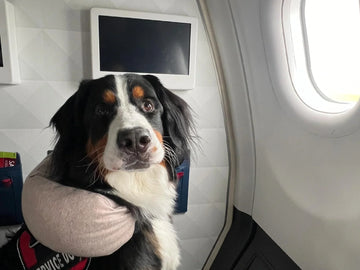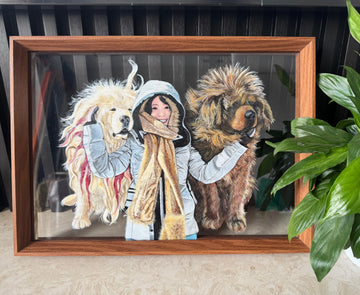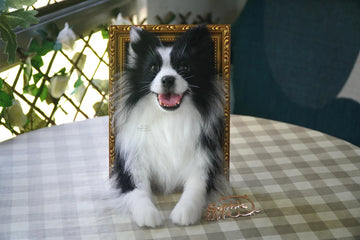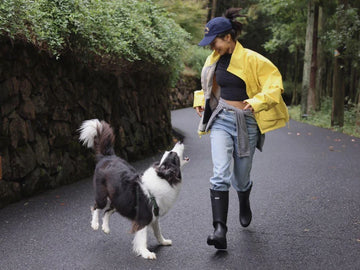Flying with a companion animal is no longer unusual—it’s a design challenge. The best airlines don’t just “allow pets”; they build calmer journeys with transparent rules, trained staff, breathable carriers, and predictable handoffs. This field guide explains what to look for, how policies differ, and how to plan a humane itinerary your pet can actually handle.
1) Why “pet-friendly” matters now
Remote and hybrid work, longer stays, and the rise of destination flexibility have turned “can we bring the dog or cat?” into a default question. If you’re new to the topic, this primer—why pets travel—explains the social shifts behind the trend. But at the airport, none of that matters unless the experience is safe and predictable for the animal. The right carrier, routing, and airline policy can be the difference between a smooth day and a stressful one.
2) What actually makes an airline pet-friendly
- Clear, current rules: Upfront weight/size limits, carrier specs, and routes where pets are permitted. Clarity reduces last-minute scrambles.
- Humane timing: Recommendations for off-peak flights, minimal connections, and limits on extreme heat/cold seasons (tarmac-time rules).
- Trained staff: Agents who know pet policies; ramp teams that prioritize live animals; dedicated escalation channels if something goes wrong.
- Cabin over cargo where feasible: Small pets, in well-ventilated carriers under the seat, fare better than in holds—when rules allow.
- Transparent cargo handling: If cargo is required, look for pressurized, temperature-controlled holds and documented handoffs.
- Fair fees & caps: Reasonable carrier fees, hard caps on animals per cabin (air quality, noise), and early reservation systems.
Pet-friendly isn’t “anything goes.” It’s precise, repeatable systems that keep animals calm and accounted for.
3) Policy building blocks (cabin, cargo, documents, breed notes)
Cabin travel (small pets)
- Soft-sided, under-seat carriers that allow standing up and turning around; ventilation on at least two sides.
- Pet + carrier weight caps (varies by carrier); advance booking often required.
- One carrier per passenger and per-seat row limits for airflow and courtesy.
Cargo / hold (when required)
- IATA-compliant, hard-sided crates with secure doors, water attachment, absorbent bedding.
- Seasonal temperature safeguards; embargoes for extreme conditions are a safety sign, not a nuisance.
- Direct flights preferred; minimal layovers; early morning/late evening for heat mitigation.
Documents
- Recent health certificate, vaccination proof, microchip number for some countries, and import permits for international routes.
Breed & health notes
- Brachycephalic (short-nosed) dogs and cats often face extra restrictions for respiratory safety.
- Consult your vet for motion sickness plans; trial carriers weeks in advance.

4) Airline Snapshots: US, Europe & Asia-Pacific (Official Specs)
Policies change often—always reconfirm with the airline before booking. Data below reflects current details published on each carrier’s official site.
United States
American Airlines
| Pet Type | Max Weight | Max Dimensions (L×W×H) | Special Requirements |
|---|---|---|---|
| Small dogs & cats (cabin) | — (must fit under-seat) | Soft-sided: 18 x 11 x 11 in (46 x 28 x 28 cm) | Counts as a carry-on; carrier must fit under seat. |
| Checked/cargo | Varies (route & aircraft) | Varies | Breed/route restrictions apply; check AA Cargo when applicable. |
Source: American Airlines pets page.
United Airlines
| Pet Type | Max Weight | Max Dimensions (L×W×H) | Special Requirements |
|---|---|---|---|
| Small dogs & cats (cabin) | — (must fit under-seat) | Hard-sided: 17.5 x 12 x 9 in; Soft-sided: up to 18 x 11 x 11 in | Carrier under-seat only; advance space limits per flight. |
| Cargo (via United’s pet program) | Varies | Varies | Route/temperature restrictions; inquire before travel. |
Source: United “Traveling with pets”/Contract of Carriage.
Delta Air Lines
| Pet Type | Max Weight | Max Dimensions (L×W×H) | Special Requirements |
|---|---|---|---|
| Small pets (cabin) | — (must fit under-seat) | Under-seat footprint only; size varies by aircraft | Counts as carry-on; must fit fully under the seat. |
| Cargo | Varies | Varies | Temperature & route restrictions; confirm before booking. |
Sources: Delta baggage/FAQs—under-seat fit required; dimensions by aircraft.
JetBlue
| Pet Type | Max Weight | Max Dimensions (L×W×H) | Special Requirements |
|---|---|---|---|
| Cabin pets | 20 lb (9.07 kg) including carrier | 17 x 12.5 x 8.5 in (43.18 x 31.75 x 21.59 cm) | One pet per traveler; advance pet booking required. |
Source: JetBlue “Traveling with Pets.”
Alaska Airlines
| Pet Type | Max Weight | Max Dimensions (L×W×H) | Special Requirements |
|---|---|---|---|
| Small dogs & cats (cabin) | — (must fit under-seat) | Soft-sided kennel: 17 x 11 x 9.5 in | Pet counts toward carry-on; cabin pet limits per flight. |
| Baggage compartment | Pet + crate ≤ 150 lb total | IATA-compliant crate (per route/aircraft) | Climate-controlled hold; embargoes & breed rules apply. |
Sources: Alaska “Pets in Cabin” (size chart) & “Pets in Baggage Compartment.”
Europe
Lufthansa
| Pet Type | Max Weight | Max Dimensions (L×W×H) | Special Requirements |
|---|---|---|---|
| Small pets (cabin) | 8 kg incl. carrier | 55 x 40 x 23 cm | IATA-approved carrier; under-seat placement. |
| Hold (cargo/checked) | By crate/route | Up to 125 x 75 x 85 cm (typical max) | Temp-controlled hold; bedding/water required. |
Source: Lufthansa “Travelling with animals.”
KLM Royal Dutch Airlines
| Pet Type | Max Weight | Max Dimensions (L×W×H) | Special Requirements |
|---|---|---|---|
| Cabin pets | 8 kg incl. carrier | 46 x 28 x 24 cm | One pet per passenger; soft carrier recommended. |
| Checked/cargo | Up to 75 kg incl. crate | Max combined dimensions 292 cm | Some brachycephalic breeds barred from hold. |
Source: KLM “Travelling with your pet.”
Air France
| Pet Type | Max Weight | Max Dimensions (L×W×H) | Special Requirements |
|---|---|---|---|
| Cabin cats & dogs | ≤ 8 kg incl. carrier | Under-seat carrier; size per route/aircraft | Advance request required; route restrictions apply. |
| Hold (checked/cargo) | 8–75 kg incl. kennel | IATA kennel sizing | Must book at least 24h prior (hold); EU/US entry rules apply. |
Source: Air France “Travel with your pet.”
British Airways
| Pet Type | Max Weight | Max Dimensions (L×W×H) | Special Requirements |
|---|---|---|---|
| Pets in cabin | — | — | Not permitted (except certified assistance dogs, free of charge in cabin). |
| Pets as cargo | Varies | Varies | Handled via PetAir UK / IAG Cargo arrangements. |
Sources: BA “Travelling with pets” & IAG Cargo Pets.
Asia-Pacific
ANA (All Nippon Airways)
| Pet Type | Max Weight | Max Dimensions (L×W×H) | Special Requirements |
|---|---|---|---|
| In cabin | — | — | Not permitted (pets travel as checked/cargo only). |
| Checked/cargo | By crate/route | IATA kennel sizing | Advance booking; temperature restrictions apply. |
Source: ANA pet travel guidance.
JAL (Japan Airlines)
| Pet Type | Max Weight | Max Dimensions (L×W×H) | Special Requirements |
|---|---|---|---|
| In cabin | — | — | Not permitted (service dogs excepted). |
| Checked/cargo | By crate/route | IATA kennel sizing | Advance request; seasonal embargoes possible. |
Source: JAL “Pets” policy page.
Singapore Airlines
| Pet Type | Max Weight | Max Dimensions (L×W×H) | Special Requirements |
|---|---|---|---|
| In cabin | — | — | Not permitted (service dogs may be accepted); pets travel as checked/cargo. |
| Checked/cargo | By crate/route | IATA kennel sizing | Pre-approval required; destination regulations apply. |
Source: SIA pet travel policy.
Cathay Pacific
| Pet Type | Max Weight | Max Dimensions (L×W×H) | Special Requirements |
|---|---|---|---|
| In cabin | — | — | Not permitted (assistance dogs excepted); pets travel as checked/cargo. |
| Checked/cargo | By crate/route | IATA kennel sizing | Advance acceptance; seasonal/temperatures rules apply. |
Source: Cathay “Travelling with pets.”
Korean Air
| Pet Type | Max Weight | Max Dimensions (L×W×H) | Special Requirements |
|---|---|---|---|
| Cabin pets | Typically ≤ 7 kg incl. carrier (route-specific) | Under-seat limits per aircraft | Advance reservation; breed/route restrictions may apply. |
| Checked/cargo | By crate/route | IATA kennel sizing | Temperature embargoes possible; verify before travel. |
Source: (Check Korean Air official policy before booking—route-specific).
Southwest Airlines
| Pet Type | Max Weight | Max Dimensions (L×W×H) | Special Requirements |
|---|---|---|---|
| Small dogs & cats (cabin) | No strict weight published; must fit under seat | 17 in × 10 in × 9.5 in (43.2 × 25.4 × 24.1 cm) | Up to 6 pets per flight; U.S. domestic only; fee $95 per pet each way; carrier must fit under seat. Service animals are exceptions. |
Air Canada
| Pet Type | Max Weight | Max Dimensions (L×W×H) | Special Requirements |
|---|---|---|---|
| Small dogs & cats (cabin) | 10 kg total (pet + carrier) | Hard-sided: 55 × 40 × 23 cm; Soft-sided: 55 × 40 × 23 cm | Carrier counts as carry-on; fees CAD $50–$120 (domestic/US) or $100–$118 (international). Seasonal restrictions apply for extreme temps. |
| Checked / baggage compartment | Up to 45 kg (pet + carrier) | Linear dimensions ≤ 292 cm (115 in) | Must use IATA-approved crate; temperature/weather restrictions apply; available on select routes. |
Ryanair
| Pet Type | Max Weight | Max Dimensions | Special Requirements |
|---|---|---|---|
| Pets (cabin or hold) | — | — | Not permitted except recognized assistance/guide dogs. No general pet transport allowed. |
EasyJet
| Pet Type | Max Weight | Max Dimensions | Special Requirements |
|---|---|---|---|
| Pets (cabin or hold) | — | — | Pets are not permitted, with the sole exception of certified service dogs. |
Qantas
| Pet Type | Max Weight | Max Dimensions | Special Requirements |
|---|---|---|---|
| Domestic pets (cargo) | Varies by aircraft | Varies by aircraft | Pets must be booked via Qantas Freight; IATA-approved crate required; no pets allowed in the cabin. |
| International pets | — | — | Subject to strict import/export and quarantine rules; often requires specialized pet relocation service. |
Virgin Atlantic
| Pet Type | Max Weight | Max Dimensions | Special Requirements |
|---|---|---|---|
| Pets (cabin) | — | — | Not permitted in cabin; only assistance animals allowed. |
| Pets (cargo) | Varies by crate & aircraft | IATA crate dimensions required | Pets travel as manifest cargo; advance booking required; limited routes only. |
5) Humane prep: training, carriers, micro-rituals
The calmest flights start at home. Build a routine your pet will experience on the day: carrier appears → treats rain → carrier goes away. Add recorded airport sounds at low volume during dinner, then slowly increase over days. Practice short car rides with the carrier belted in. If your pet associates carriers with only vet visits, change that story now.
- Carrier fit test: your animal stands, turns, and lies down fully. Ventilation on multiple sides; soft, non-shedding bedding.
- Pre-flight meal timing: small, early meal to reduce nausea; water access until security; then a few licks of water pre-boarding.
- Calm cues: same phrase and hand on the carrier top at takeoff/landing; bodies remember patterns more than words.
- Human anchor: carry a small, tactile token that reminds you to breathe and be steady. A tasteful, soft accessory—like a felt charm keychain—can be a harmless visual cue for the human. (Keep accessories clear of zippers and safety hardware.)

6) Comparison Table: Policy Signals & Service Differentiators
Use this table to compare approach. Specific fees and dimensions change; verify with the airline when booking.
| Airline (Region) | In-Cabin Pets | Cargo/Hold Conditions | Booking & Docs | Standout Safety Signals | Good For |
|---|---|---|---|---|---|
| Alaska (US) | Often allowed on domestic routes; caps per cabin | Temp-aware routing on select routes | Advance add-on; clear online policy | Plain-language rules; connections guidance | Domestic flyers seeking clarity |
| Delta (US) | Small pets in cabin where permitted | Hold options subject to season & route | Health certs on request; breed notes | Embargo transparency in heat/cold | Mixed US/international itineraries |
| American (US) | Yes on selected routes; per-flight limits | Route-dependent; check aircraft type | Pre-approval recommended | Published per-cabin pet counts | Major hubs & direct flights |
| JetBlue (US) | Brand-forward pet program; simple add-on | Primarily cabin offering | Easy online add; documentation simple | Agent familiarity & consistent messaging | Short-haul, cabin-sized pets |
| Lufthansa (EU) | Structured cabin rules; size/weight caps | Pressurized holds; crate standards emphasized | Thorough document checks | Reputation for trained handling | Inter-EU & long-haul connections |
| KLM (EU) | Cabin on many routes; numbers capped | Seasonal restrictions clearly stated | Strong interline guidance | Route-specific temperature notes | Complex itineraries via AMS |
| Air France (EU) | Cabin & hold options; species limits | Controlled holds; crate compliance key | Schengen vs non-Schengen clarity | Good policy pages in multiple languages | EU travelers with precise docs |
| British Airways (EU/UK) | Cabin restrictions; partners for cargo | Dedicated animal logistics partners | Advance arrangements required | Specialist handlers; route transparency | Transatlantic moves with pros |
| ANA / JAL (JP) | Typically no cabin pets; exceptions rare | Documented hold handling; temp management | Strict paperwork timelines | Methodical ground procedures | Japan routes with careful planning |
| Singapore Airlines (APAC) | Cabin limits; cargo common | Transparent standards; import rules strict | Detailed checklists & permits | Compliance support | Asia gateways with tight regulations |
| Qantas (AU) | Cabin limited; cargo domestic common | Temperature rules; route-specific | Advance booking; vet docs | Clear summer/winter advisories | In-country moves across climate zones |
| Ryanair / EasyJet (EU LCC) | Generally not permitted (assistance dogs excepted) | — | — | Policy clarity: simply “no” | Choose rail/drive alternatives |
| Disclaimer: This table highlights approaches and safety signals, not current dimensions/fees. Always confirm the latest policy with the carrier before booking. | |||||
7) FAQ
Is cabin always kinder than cargo?
For small, carrier-trained animals, yes—cabin travel keeps you close and reduces handoffs. If cargo is required for size or route, choose pressurized, temperature-controlled holds, direct flights, and mild hours. Ask specifically about tarmac procedures.
How early should I book?
As soon as you choose dates. Airlines cap the number of in-cabin pets per flight, and some routes have seasonal embargoes for cargo. Early booking avoids last-minute reroutes that add stress.
Should I sedate my pet?
Most vets advise against sedation for air travel; it can affect breathing and balance. Discuss anti-nausea, pheromone options, or nutraceuticals with your veterinarian instead, and rely on training and carrier conditioning.
What about short-nosed breeds?
Brachycephalic animals can overheat and struggle with low oxygen. Many airlines restrict their travel—especially in cargo. If travel is essential, consult your vet and aim for cabin routes, mild weather, and minimal segment time.
How can I keep myself calm so my pet stays calm?
Animals co-regulate. Simple human anchors help: a breath pattern, a palm rest on the carrier, or a small tactile reminder. Many travelers like a soft accessory such as a felt charm keychain to cue calmer breathing. Keep accessories minimal and away from zippers and straps.
What documents do I need for international trips?
Typically: health certificate within a set window, rabies vaccination proof, microchip registration, and import permits where required. Some destinations mandate specific parasite treatments. Start with the destination country’s official site, then your airline, then your vet.
What’s one change that lowers risk the most?
Reduce segments. A single, early-morning nonstop flight in mild weather is usually kinder than a multi-stop itinerary—even on a nominally more “pet-friendly” carrier.
Conclusion
“Pet-friendly airline” isn’t a trophy; it’s a set of behaviors: publish clear rules, cap cabin counts, train staff, control microclimates, communicate handoffs, and say “no” when temperatures or routes make travel unsafe. For your family, the best carrier is the one that lets you design an animal-first itinerary: predictable timing, minimal unknowns, and human calm your pet can borrow. Start with carrier training at home, choose the least complicated route, and double-check policies a week before departure. The flight is only one day; the bond is the point.
Travel light, travel slow, travel together.





